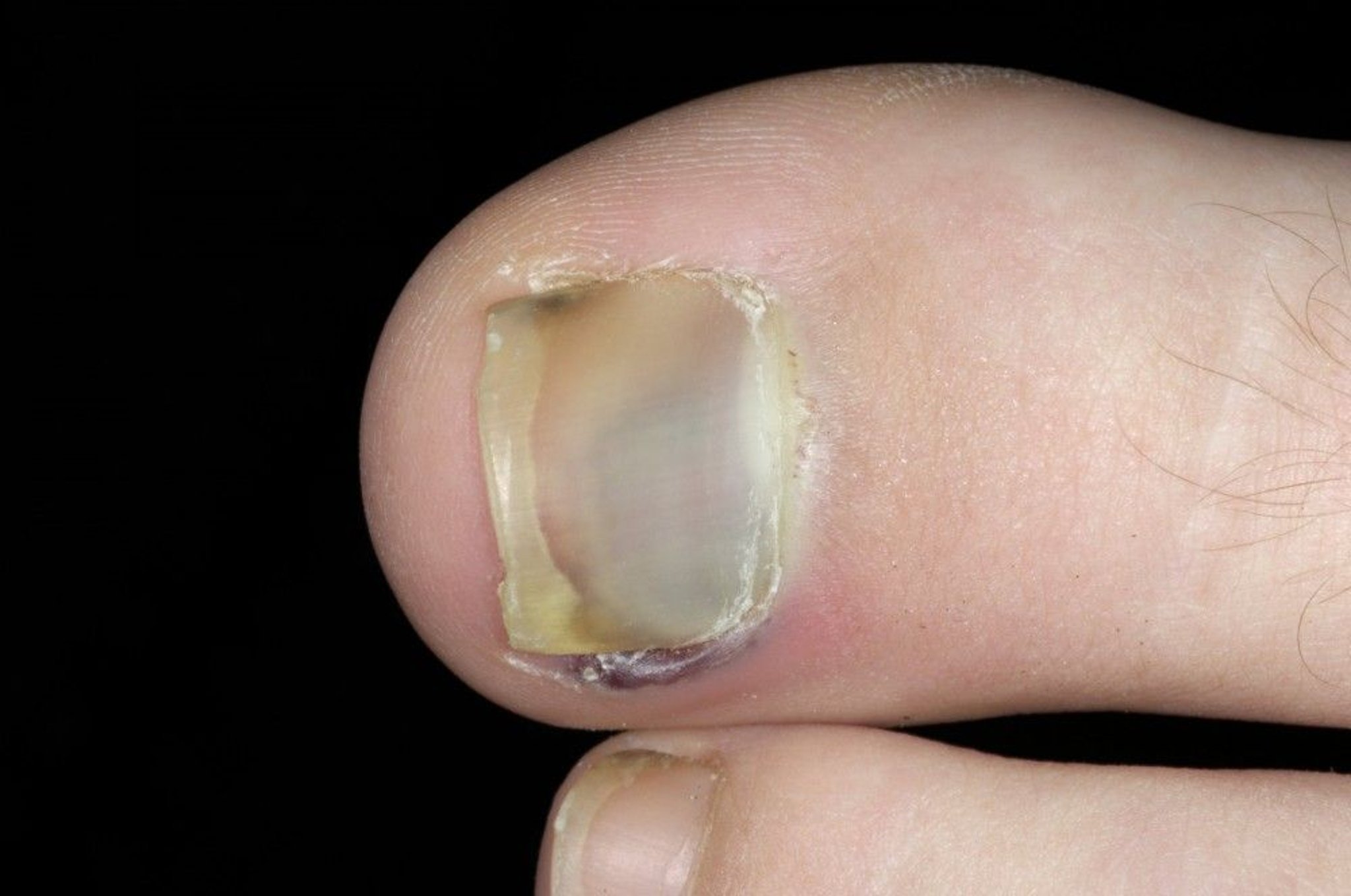- Overview of Fractures
- Pediatric Physeal (Growth Plate) Fractures
- Clavicle Fractures
- Proximal Humeral Fractures
- Distal Humeral Fractures
- Radial Head Fractures
- Ulnar and Radial Shaft Fractures
- Distal Radius Fractures
- Isolated Olecranon Fractures
- Scaphoid (Navicular) Fractures
- Metacarpal Neck Fractures
- Fingertip Fractures
- Vertebral Compression Fractures
- Pelvic Fractures
- Hip Fractures
- Femoral Shaft Fractures
- Ankle Fractures
- Calcaneal Fractures
- Fracture-Dislocation of the Midfoot (Lisfranc Injury)
- Fractures of the 5th Metatarsal Bone
- Toe Fractures
- Compartment Syndrome
Most toe fractures are minimally displaced and require only taping to an adjacent toe (buddy taping).
(See also Overview of Fractures.)
DR P. MARAZZI/SCIENCE PHOTO LIBRARY
Toe fractures may result from dropping a heavy object on the toes or stubbing them.
Pain, swelling, and tenderness are common. Subungual hematoma (between the nail plate and nail bed) is also common, particularly when the mechanism is a crush injury (see image subungual hematoma).
Diagnosis of Toe Fractures
If certain injuries are suspected, radiographs
ZEPHYR/SCIENCE PHOTO LIBRARY
Unless rotational deformity or joint involvement is suspected or the proximal phalanx of the great toe (hallux) is injured, radiographs are usually unnecessary because treatment is the same whether fracture is present or not. When radiographs are indicated, anteroposterior, lateral, and oblique views of each toe are taken.
Treatment of Toe Fractures
Taping the injured toe to an adjacent toe
For certain injuries, reduction and fixation
Treatment of a toe fracture involves taping the injured toe to an adjacent toe (dynamic splinting, or buddy taping).
If the toe is displaced or deformed, reduction may be needed before buddy taping. Fixation is sometimes indicated (eg, for fractures with marked displacement or rotational deformity of the great toe).
If the great toe is fractured, patients should not put weight on the injured foot and should wear a hard-soled postoperative shoe; follow-up appointments should be scheduled with an orthopedic surgeon.
Key Points
A fractured toe is usually painful and swollen; a subungual hematoma commonly forms, particularly when the toe has been crushed.
Take anteroposterior, lateral, and oblique views of each toe if rotational deformity or joint involvement is suspected or if the proximal phalanx of the great toe is injured; otherwise radiographs are usually unnecessary because treatment is the same whether fracture is present or not.
Tape the injured toe to an adjacent toe; if the toe is displaced or deformed, reduction may be needed first.
If the great toe is fractured, instruct patients not to put weight on the injured foot, treat with a hard-soled postoperative shoe, and make sure patients schedule follow-up appointments with an orthopedic surgeon.




